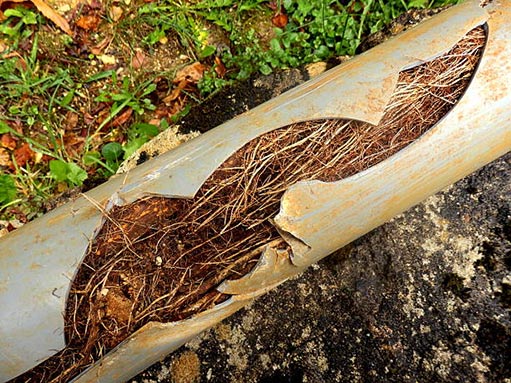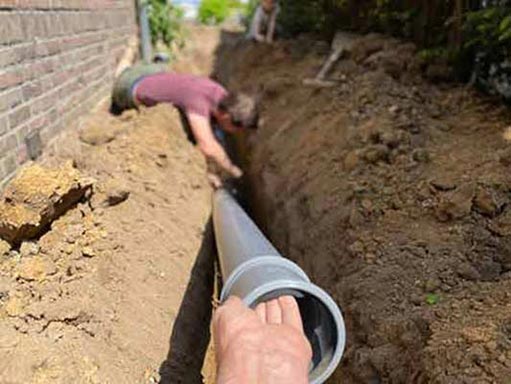
Sewer line issues can be a major headache for homeowners, causing costly and inconvenient repairs. Here we will provide you with valuable information on how to identify and detect sewer line problems early on, allowing you to take prompt action and prevent further damage. Whether you are a homeowner in Bridgeport, or a professional in the plumbing industry, these tips will help you become more knowledgeable and proactive in sewer line maintenance.
The Importance of Detecting Sewer Line Problems
Understanding the importance of detecting sewer line problems is crucial to avoid extensive damage to your property and prevent potential health hazards. A damaged sewer line can lead to sewage backups, foul odors, contaminated water sources, and even property damage. By detecting these issues early on, you can save yourself from costly repairs and maintain a safe and healthy living environment.
Signs of Sewer Line Problems
Here are some common signs that indicate potential sewer line problems:
- Frequent and recurring drain clogs
- Slow drains in multiple fixtures
- Gurgling noises from drains or toilets
- Foul odors coming from drains or outdoors
- Soggy or sunken patches in your yard
- Insect or rodent infestations
- Unexplained increase in water bills
If you notice any of these signs, it’s important to act quickly and investigate further to determine the extent of the sewer line problem.
DIY Techniques for Detecting Sewer Line Problems
While it’s always recommended to contact a professional Bridgeport plumber for accurate diagnosis and repairs, there are some DIY techniques you can try to detect sewer line problems:
Visual Inspection
Start by visually inspecting your property for any signs of a sewer line problem. Look for areas where the ground is wet or depressed, as it could indicate a leak in the sewer line. Additionally, check for any foul odors or sewage backups in your drains or toilets.
Check Multiple Drains
If you suspect a sewer line issue, check multiple drains in your home. Flush toilets, run faucets, and let water drain from different fixtures simultaneously. If you notice slow drainage or gurgling noises, it could be a sign of a clogged or damaged sewer line.
Conduct a Water Meter Test
To determine if you have an underground leak in your sewer line, you can conduct a simple water meter test. Start by turning off all water sources in your home and record the water meter reading. Wait for a few hours without using any water and then check the meter again. If the reading has changed, it indicates a leak in your plumbing system, which may be caused by a damaged sewer line.
Use a Plumbing Snake
A plumbing snake, also known as a drain auger, can be used to identify clogs or blockages in your sewer line. Insert the snake into the drain and rotate it while pushing it further into the pipe. If you encounter resistance or the snake gets stuck, it could indicate a problem within the sewer line.

By being aware of the signs of sewer line issues and using DIY techniques, you can identify potential problems and take prompt action.
When to Seek Professional Help
While DIY techniques can be helpful in detecting sewer line problems, it’s important to know when it’s time to call a Bridgeport area plumber. Consider seeking professional help in the following situations:
- If you are unable to identify the cause of the sewer line problem
- If you suspect a major sewer line blockage or collapse
- If you notice sewage backups or foul odors
- If you are planning to undertake sewer line repairs or replacements
Professional plumbers have the necessary expertise, equipment, and knowledge to accurately identify, diagnose, and repair sewer line breaks. They can also provide you with comprehensive solutions and preventive measures to avoid future issues.
Preventive Measures for Maintaining a Healthy Sewer Line
Prevention plays a crucial role in maintaining a healthy sewer line and avoiding costly repairs. Here are some preventive measures you can take:
- Avoid flushing anything other than human waste and toilet paper down the toilet
- Dispose of cooking grease, oil, and fat properly instead of pouring them down the drain
- Install drain screens to prevent hair, debris, and other solid materials from entering the sewer line
- Regularly clean your drains using natural cleaning solutions or call for professional drain cleaning services
- Avoid planting trees or large plants near your sewer line to prevent root intrusion
- Consider annual sewer line inspections to identify and address any potential issues before they escalate
By following these preventive measures, you can significantly reduce the risk of sewer line problems and ensure the long-term health and functionality of your plumbing system.
Detecting sewer line problems early on is crucial to prevent extensive damage to your property and maintain a safe living environment. By being aware of the signs of sewer line issues and using DIY techniques, you can identify potential problems and take prompt action. Remember, if you are unsure or the problem persists, it’s always wise to call a professional plumber in Bridgeport. Taking preventive measures and regularly maintaining your sewer line will save you time, money, and stress in the long run. Stay proactive and keep your sewer line in Bridgeport functioning optimally!
—